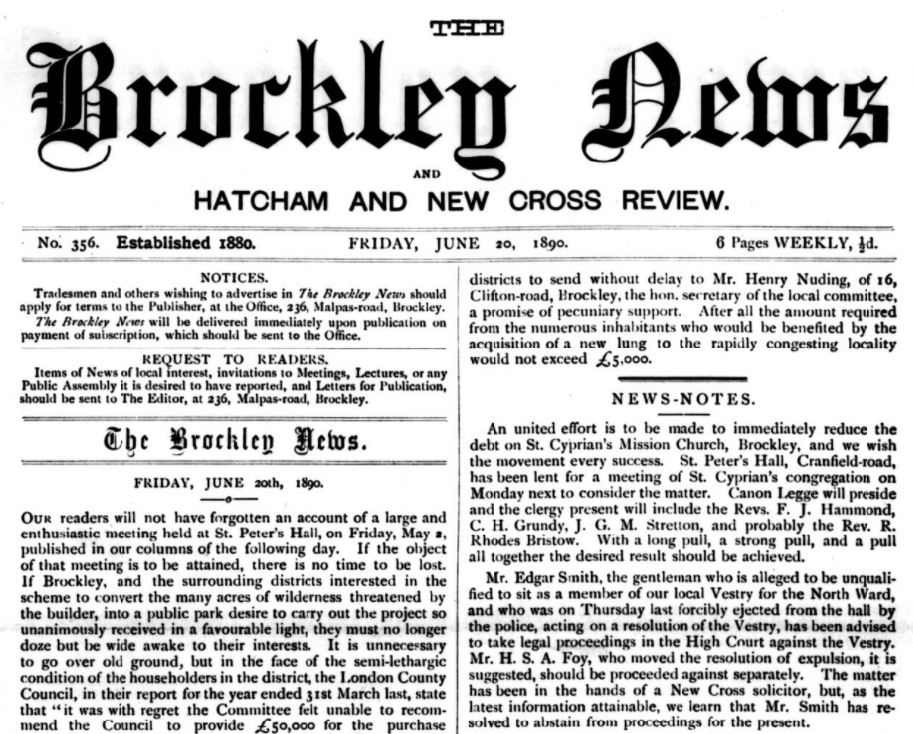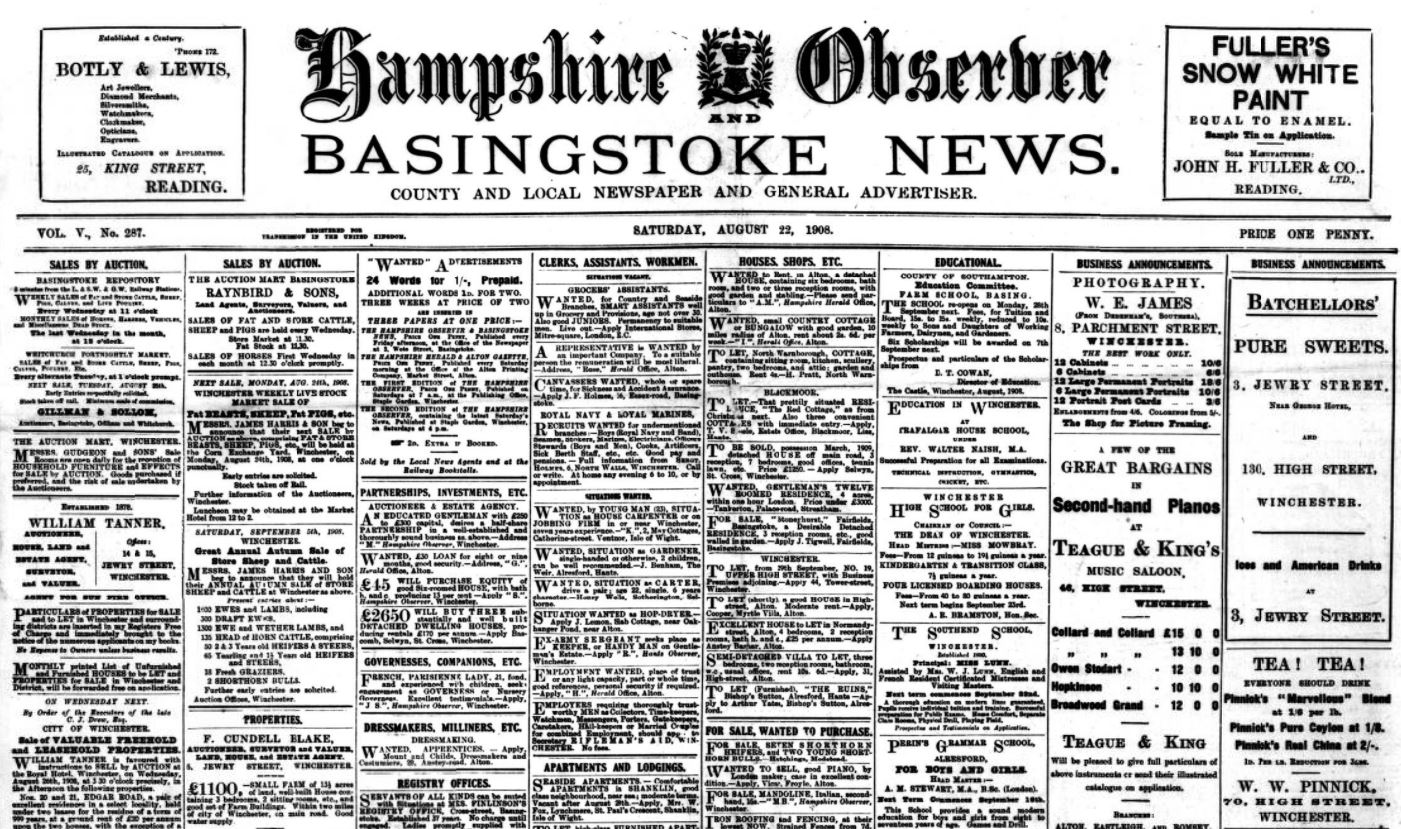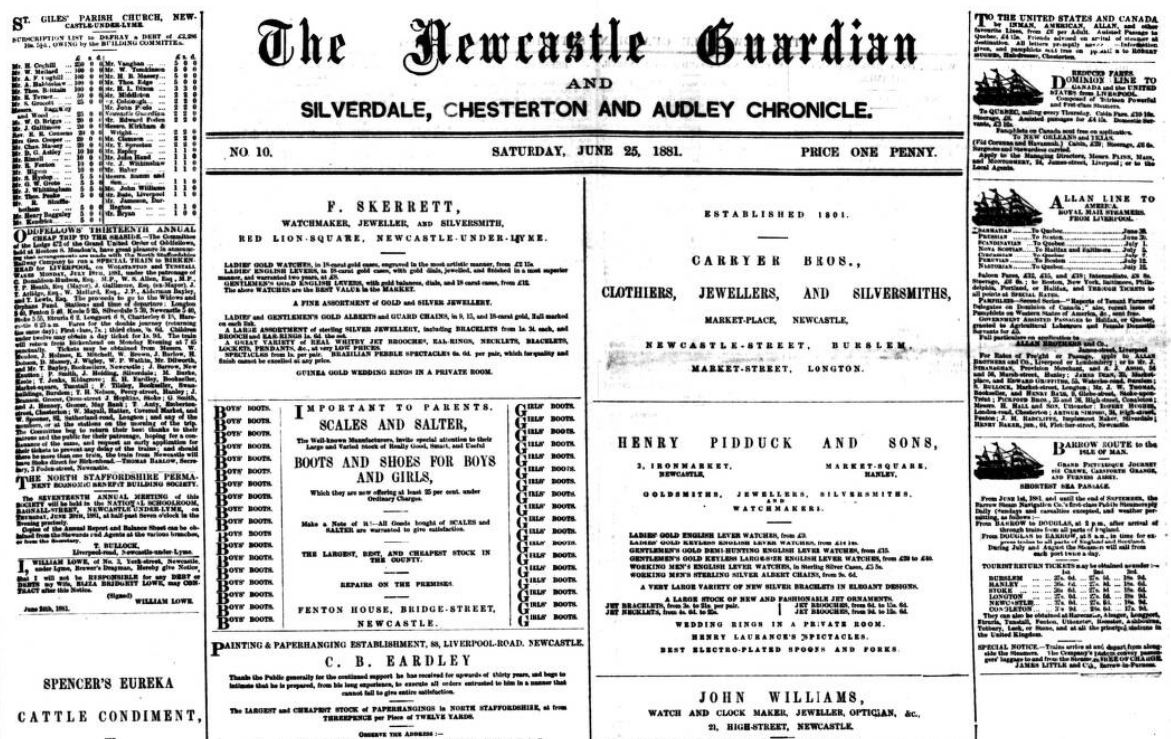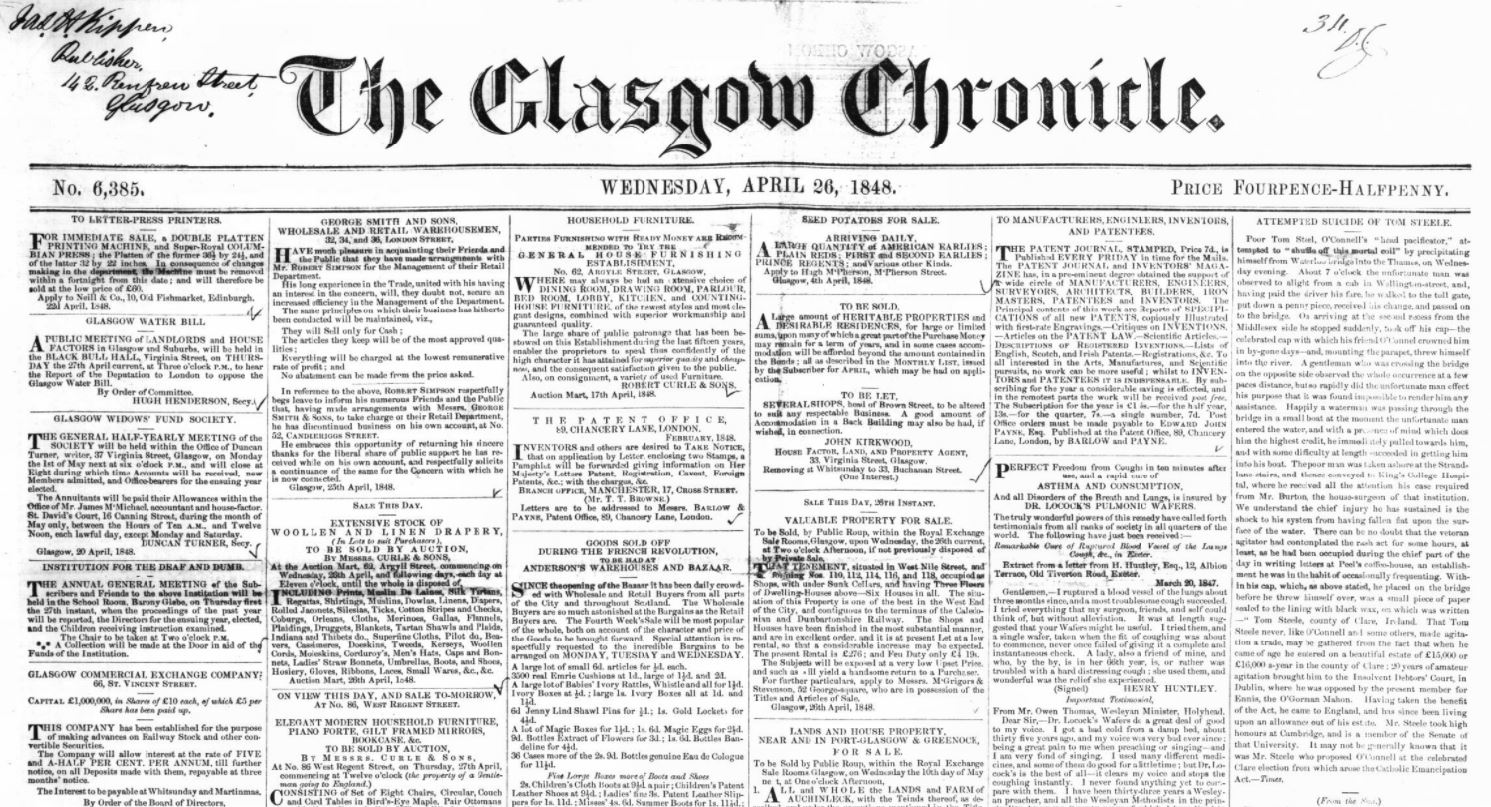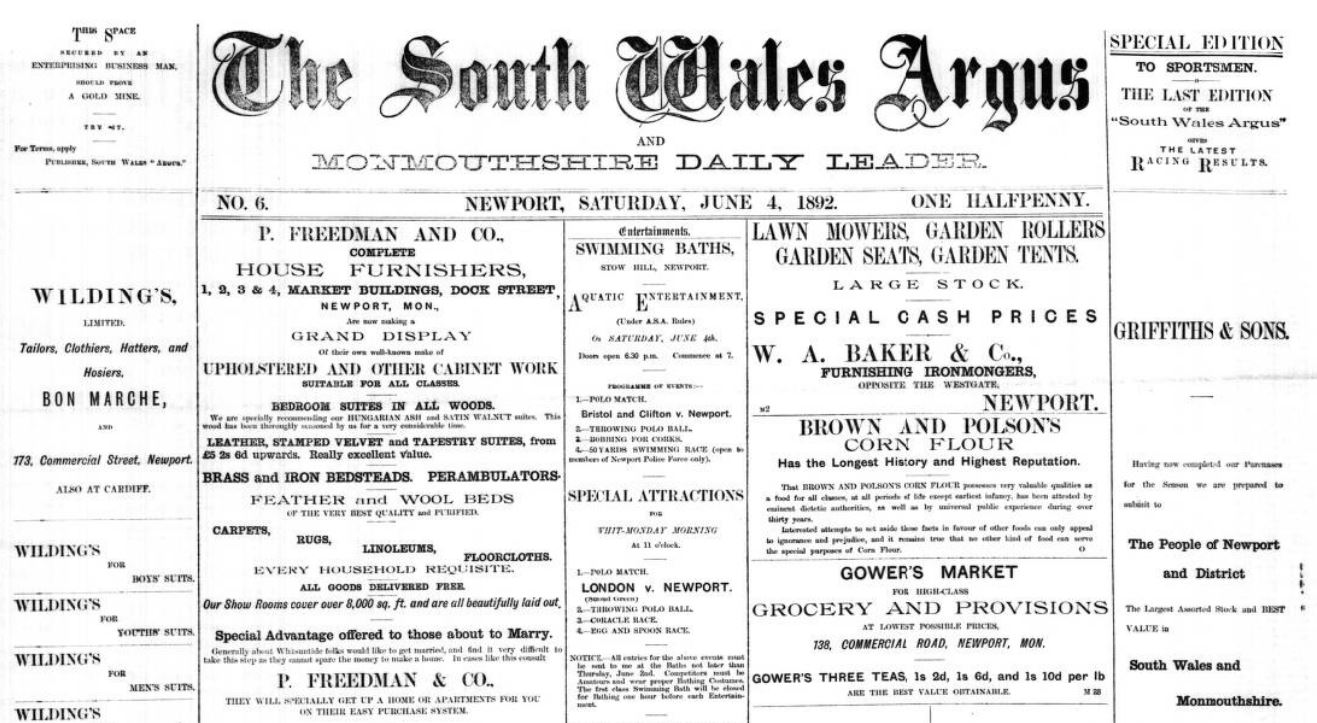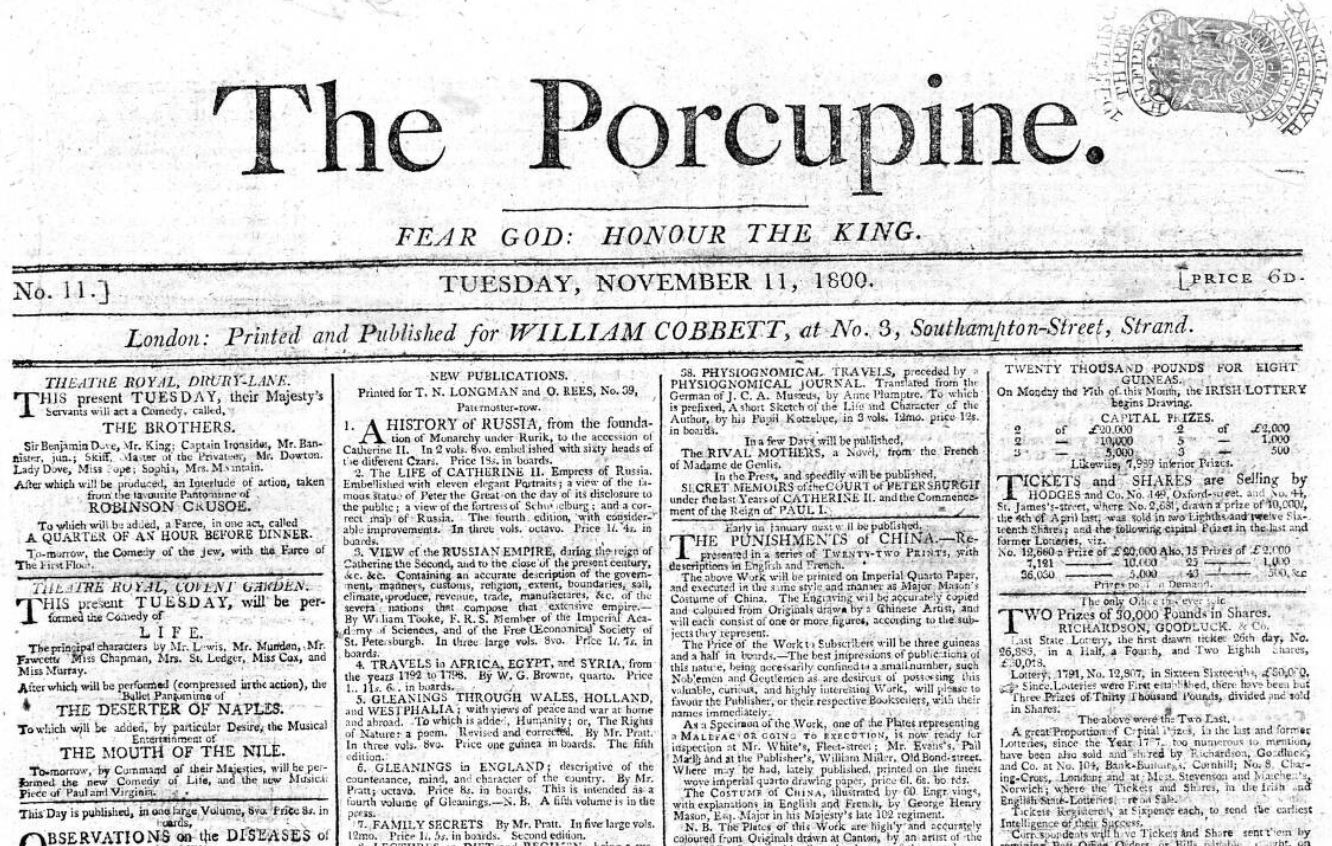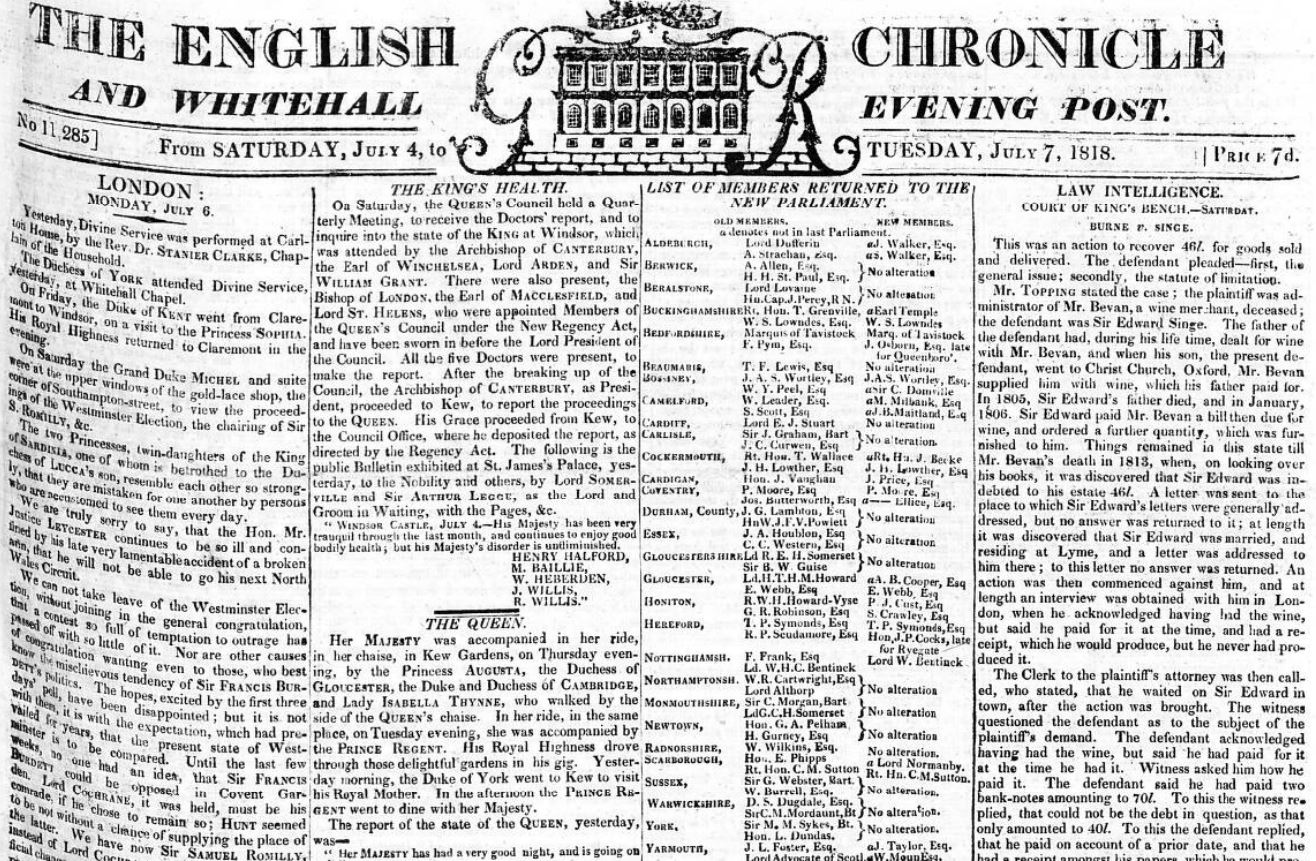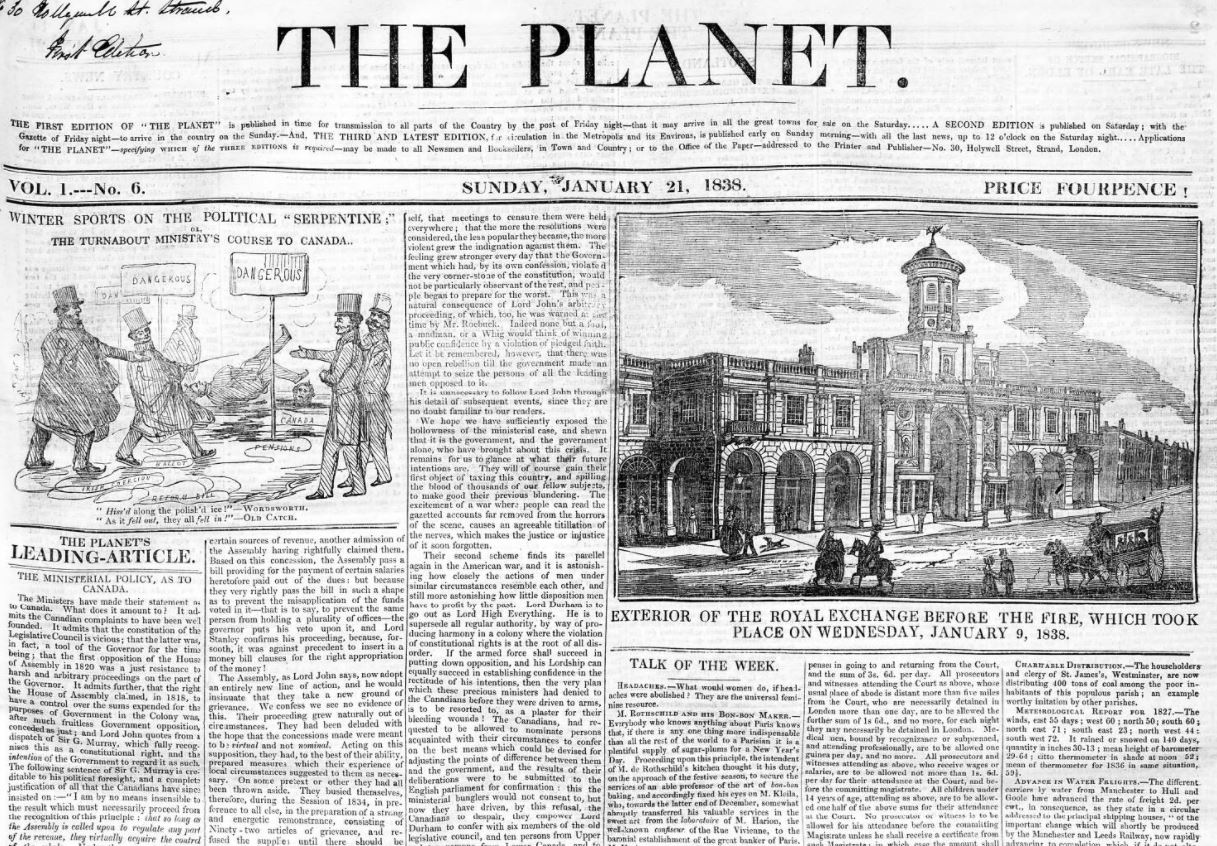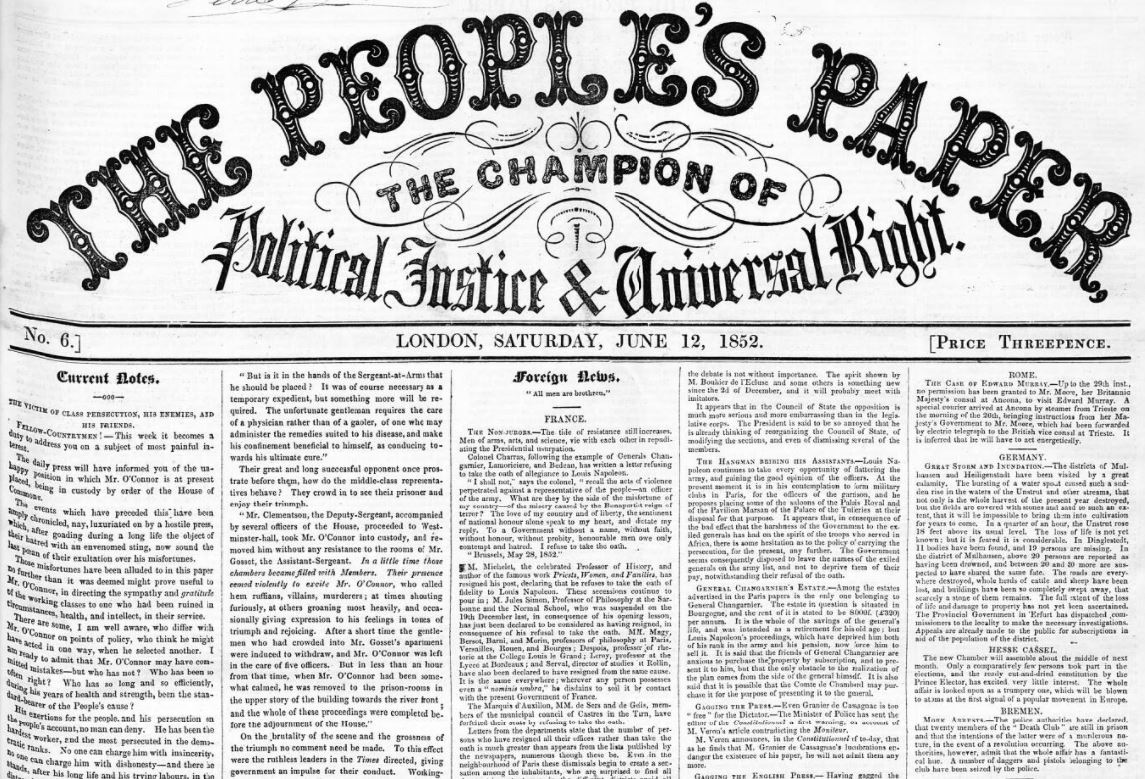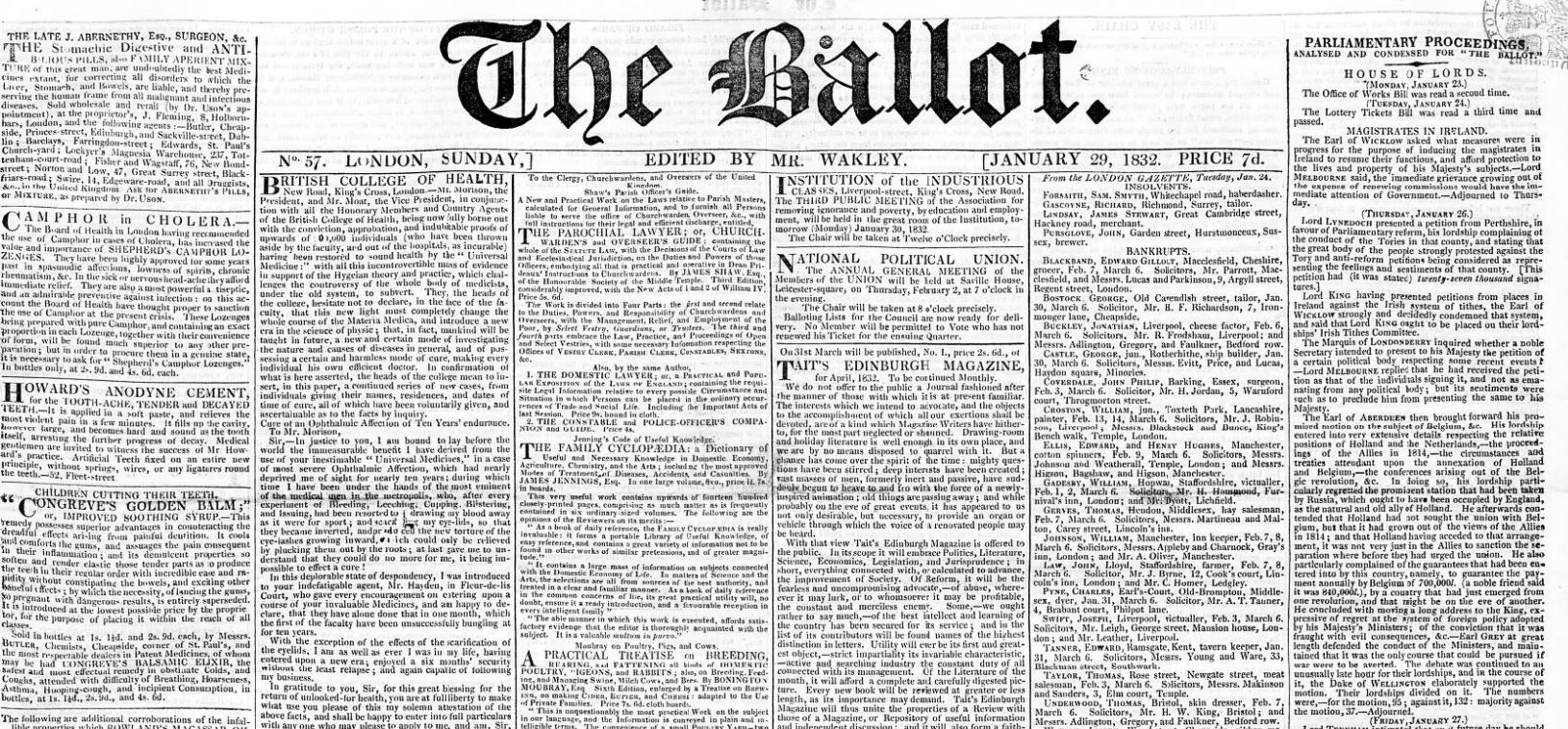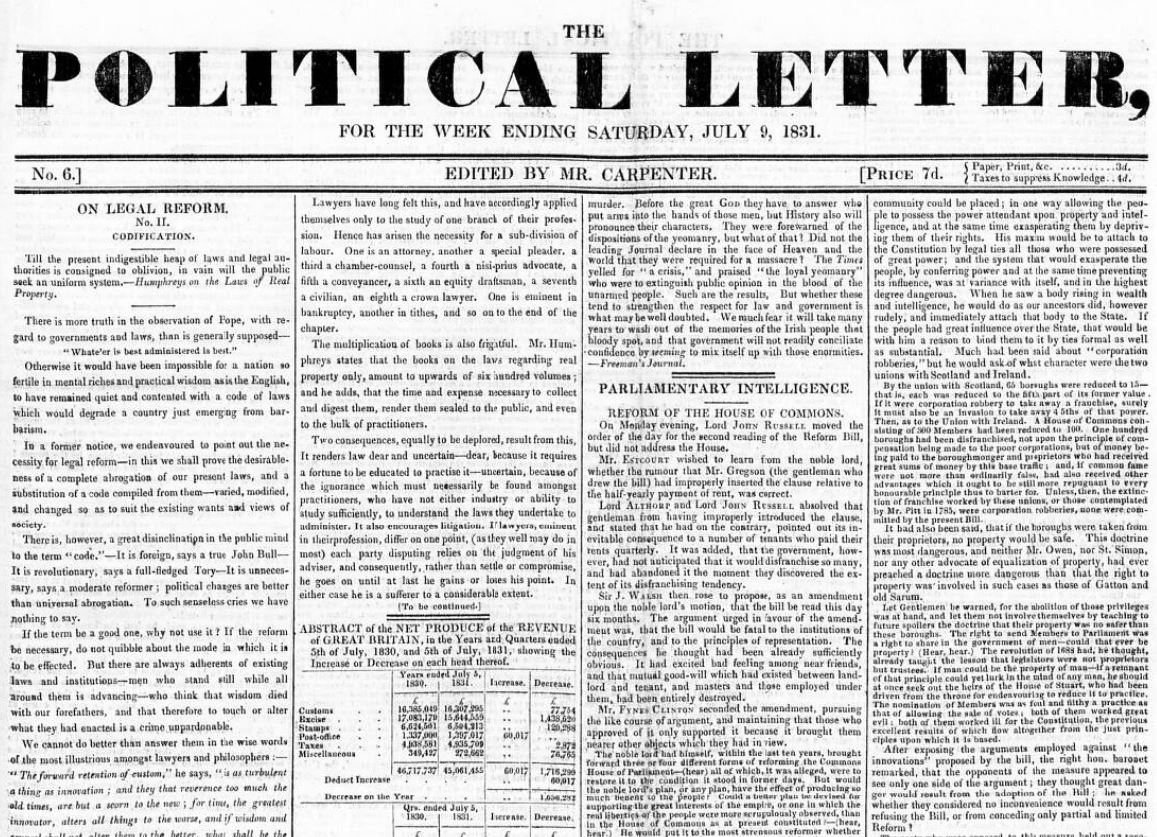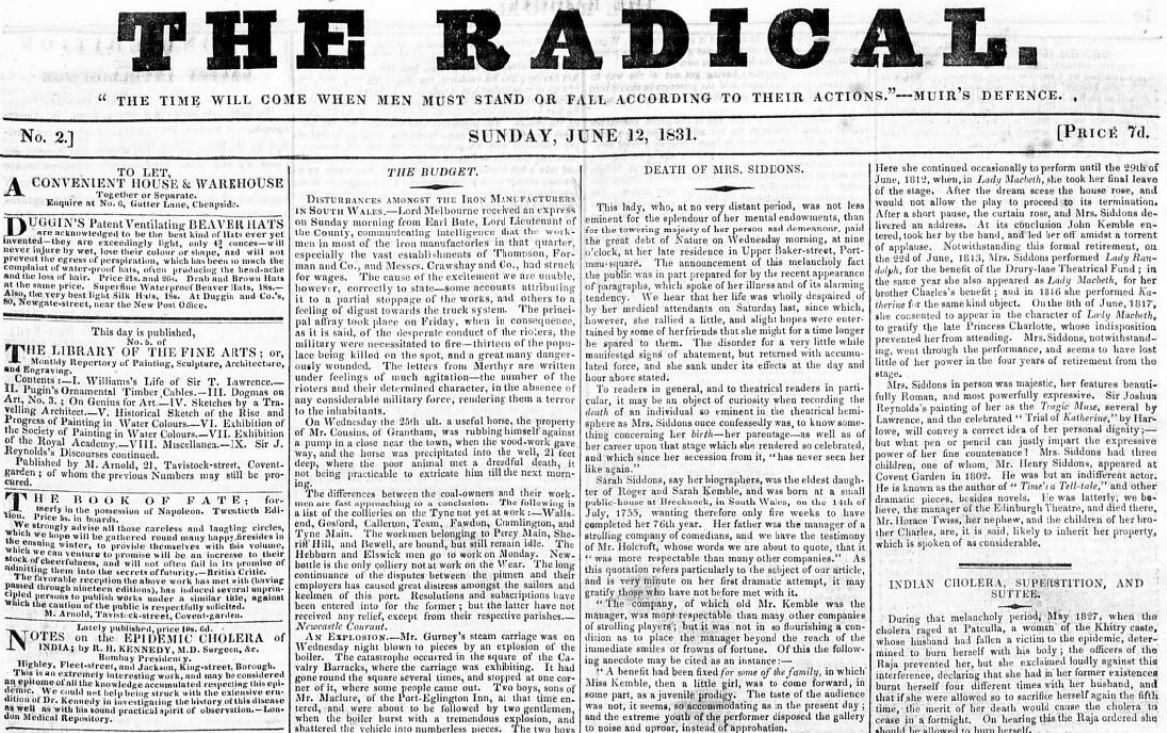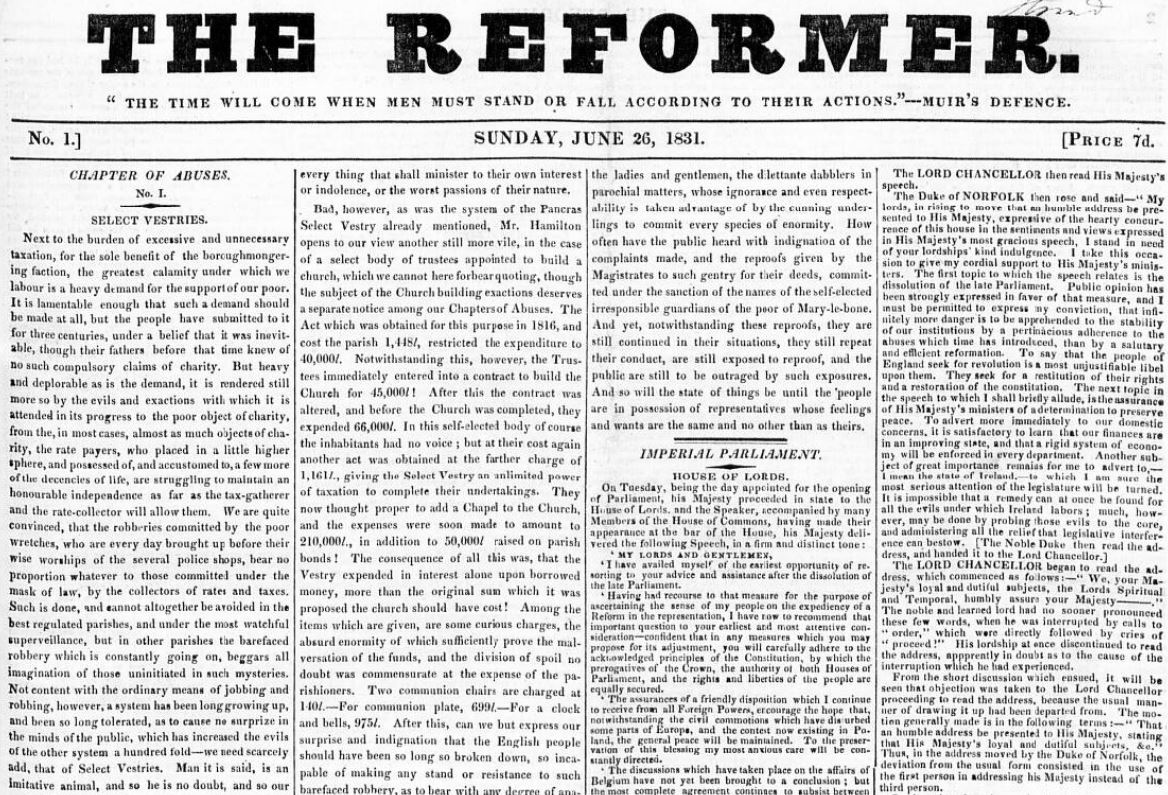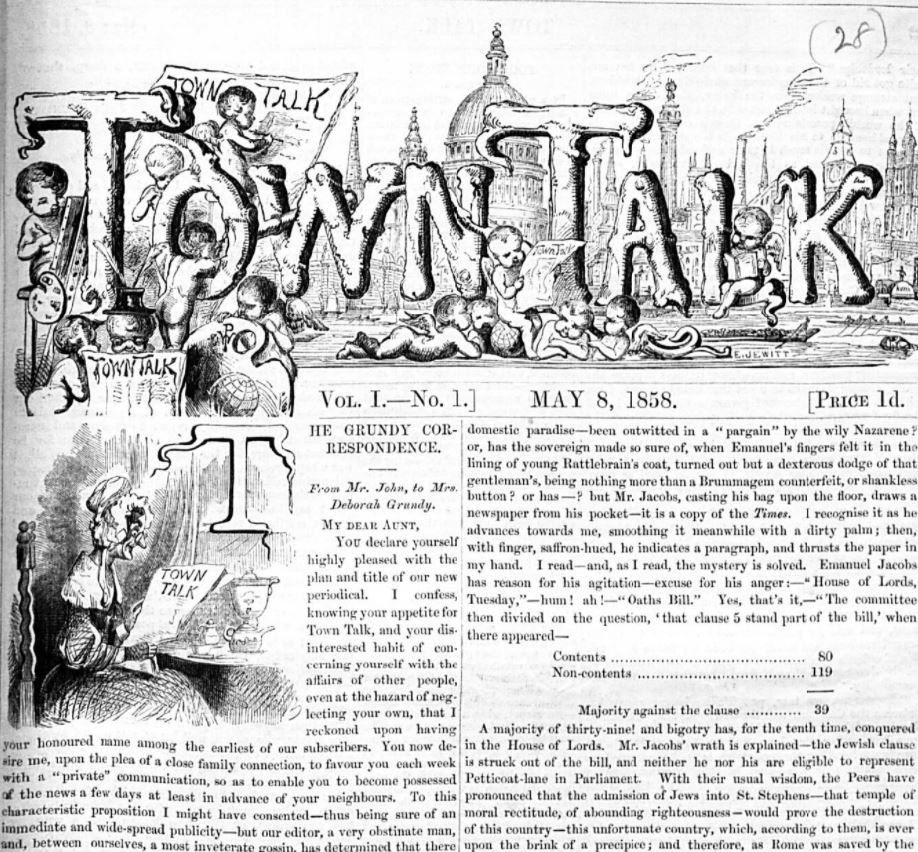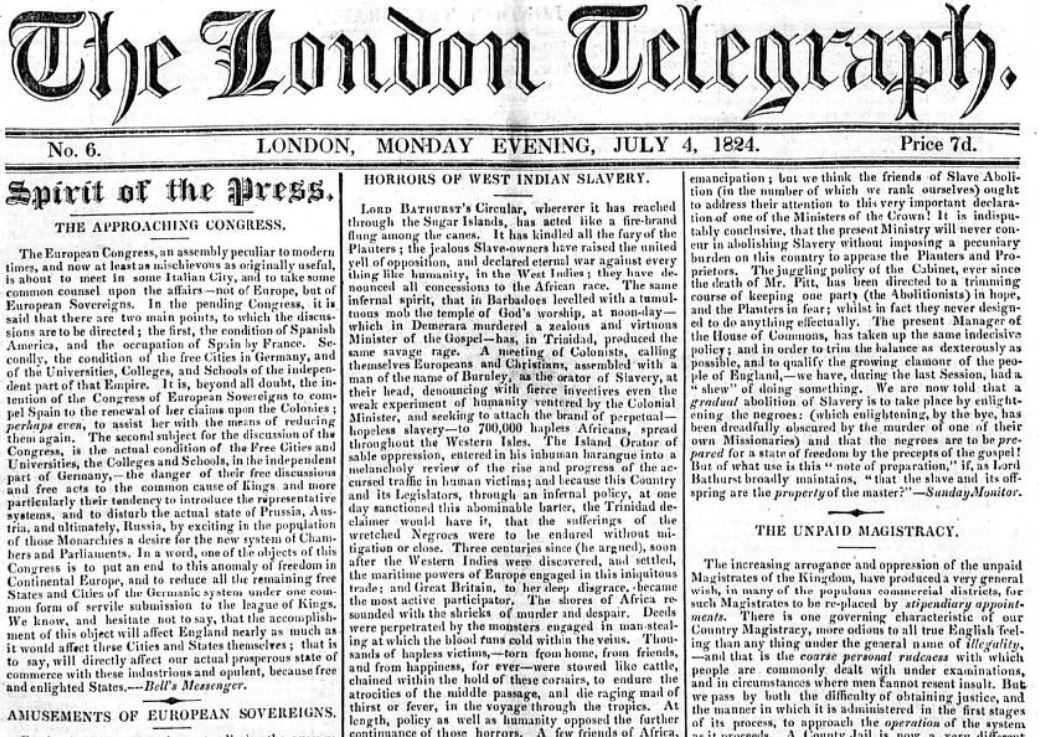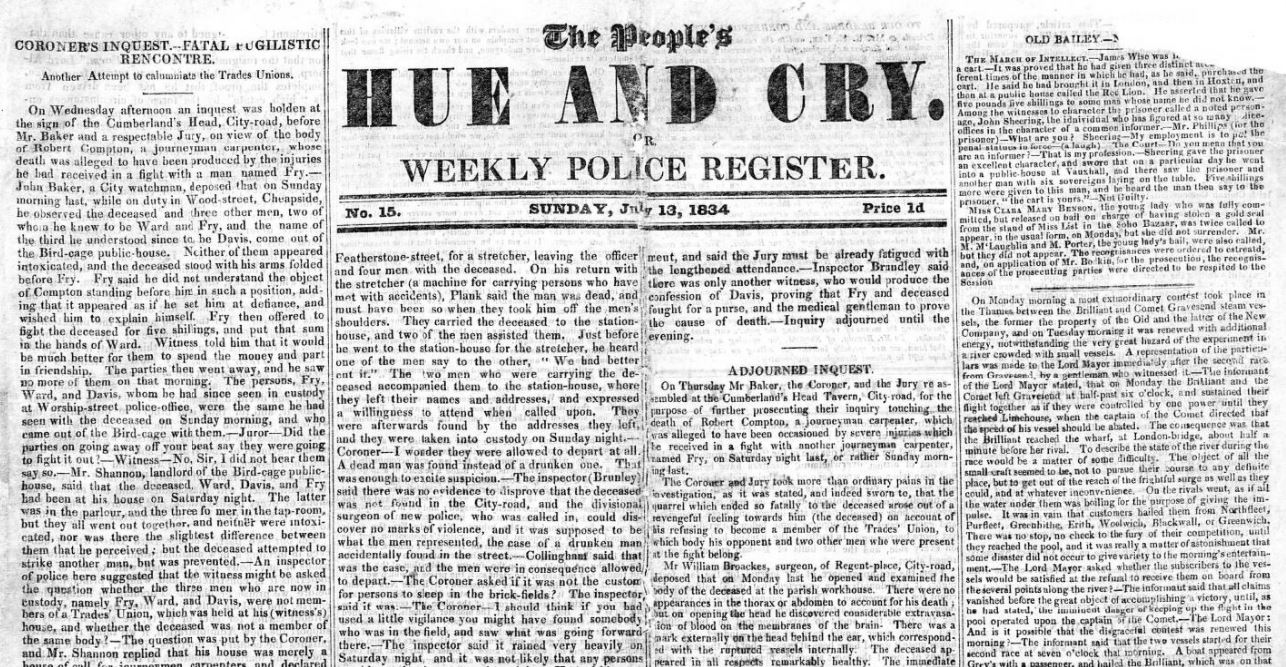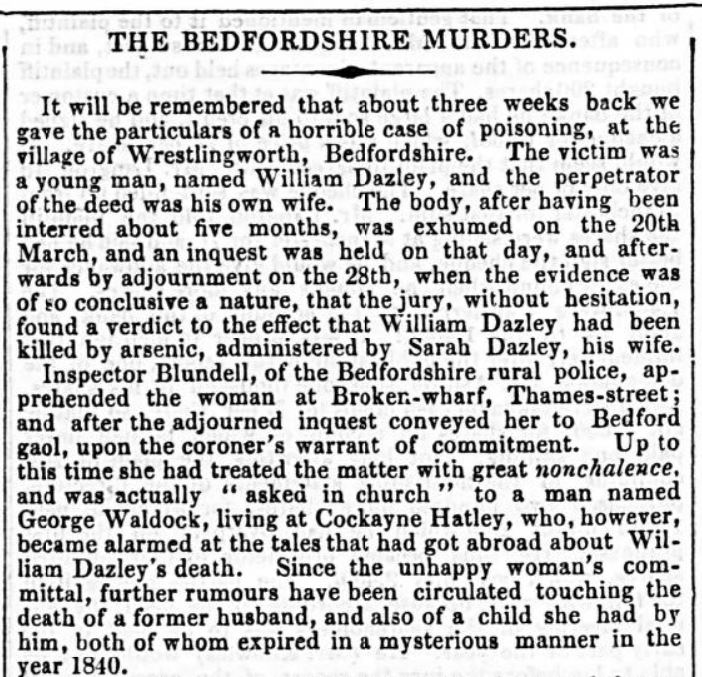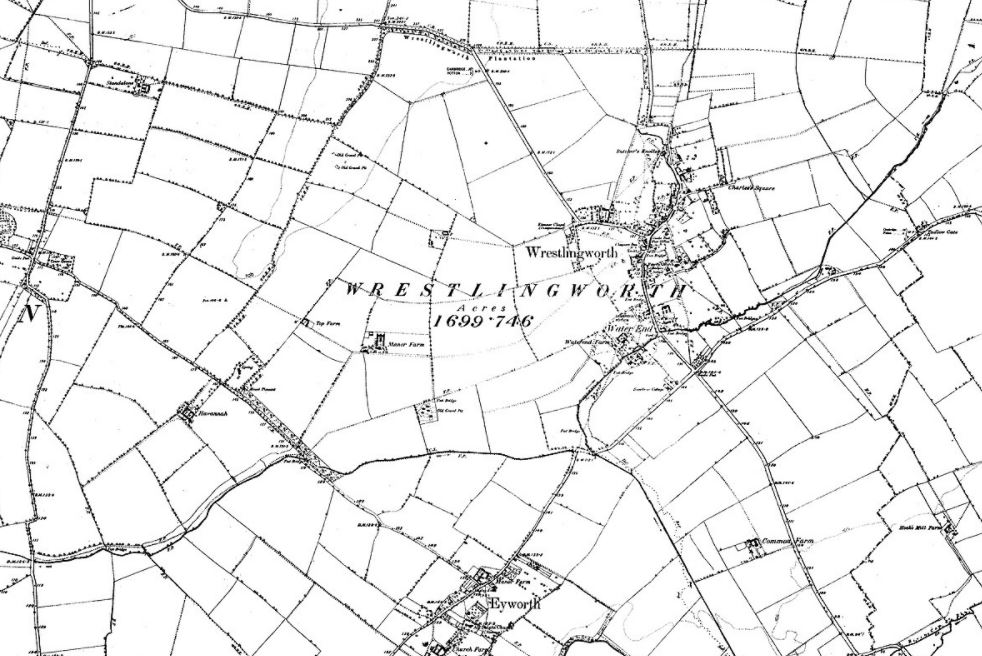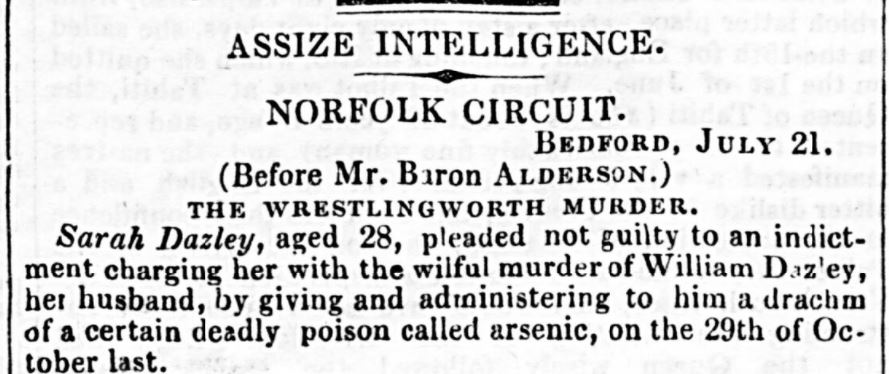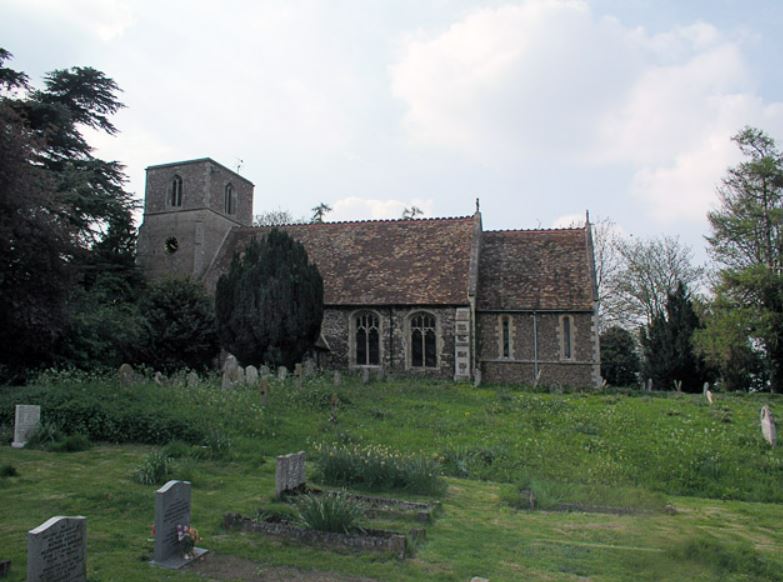This week at The Archive we have been beavering away to bring you 199,116 brand new pages, 17 brand new titles and 28 updated titles from across England, Wales, Scotland and Ireland.
We have added five brand new regional titles from England, Wales and Scotland over the past seven days, and we have added twelve titles as part of the British Library’s ongoing Heritage Made Digital programme.
So read on to discover about all of the updates we have made this week, as well as to find out more about convicted murderer Sarah Dazley, the last woman to be publicly executed in Britain.
Register now and explore the Archive
We start our foray through our wonderful new titles of the week with a look at the Brockley News, New Cross and Hatcham Review. This South London newspaper was founded in 1880 as a Conservative publication, appearing every Friday and costing one penny. You will notice that the Brockley News differs greatly from its newspaper contemporaries in its format; its more minimal feel comes from it only having two columns per page.
Brockley News, New Cross and Hatcham Review | 20 June 1890
However, on 30 May 1890 Brockley News readers were informed that two inches had been added to the publication, to give an extra column for news, which would primarily focus on local interest stories. And indeed the Brockley News was proudly local, whether the news was good or bad (what do they say about publicity?), featuring such headlines as: ‘Unmuzzled Dogs at Brockley,’ ‘Brockley Inventor,’ ‘Daring Burglary at Brockley,’ and ‘A Brockley Failure.’
The newspaper also featured sporting news, with a particular focus on cricket, the latest from local temperance societies, correspondence and fiction, like ‘The Mystery of Brackenleigh Hill.’
We stay in the south east of England for our next new title, the Hampshire Observer and Basingstoke News. Published in the town of Basingstoke, the Hampshire Observer and Basingstoke News declared itself to be a ‘County and Local Newspaper and General Advertiser.’
Hampshire Observer and Basingstoke News | 22 August 1908
Appearing every Wednesday, the Hampshire Observer featured local news from Basingstoke, Hartley Witney, Aldershot and Highclere, as well as other nearby towns and villages. It also had sections devoted to sports and pastimes, as well as legal notices, weddings, letters to the editor, and notices of births, marriages and deaths.
Next of our new regional titles this week is the Newcastle Guardian and Silverdale, Chesterton and Audley Chronicle. This Liberal publication was first published in Newcastle-under-Lyme, Staffordshire, on 23 April 1881, circulating in the market town and its environs.
The Newcastle Guardian’s first edition addressed its new readership as follows:
To-day we present the population of Newcastle, Silverdale, Chesterton and Audley with a journal which they may look upon as entirely as their own. It will be published in the good old borough; most of its articles will be written by Newcastle men; and while giving the news of the world from week to week, it will report with special fullness the news of the Newcastle district.
Newcastle Guardian and Silverdale, Chesterton and Audley Chronicle | 25 June 1881
Indeed, ‘the want of such a Paper has recently been strongly felt, and as strongly expressed.’ Meanwhile, the Newcastle Guardian would be ‘broadly and frankly Liberal’ in its politics, supporting the ‘Liberal government of the day.’
Appearing within the pages of the Newcastle Guardian were ‘Local Notes,’ the latest from the nearby Boards of Guardians and the police, as well as special interest columns devoted to agriculture, gardening and poetry. You can also find within the pages of this newspaper a ‘Fancies and Varieties’ section, and a section entitled ‘London Gossip.’
We move now to Scotland for our next new title, and we are delighted to welcome a historic Glasgow title to our collection. Described as the ‘oldest Liberal newspaper in the metropolis of the west,’ the Glasgow Chronicle was first published in 1811 under the editorship of David Prentice. Noted for being the ‘joint stock property of the leading Whigs of the west of Scotland,’ this newspaper found favour amongst the nobility, with the Duke of Hamilton a regular visitor at the Glasgow Chronicle’s offices.
When Prentice died in 1837, he was succeeded by ‘self-taught working-man George Ritchie, a nailer, from Lanark…a most sententious and powerful political writer.’ Ritchie’s tenure saw success; for ‘From 1837 until…about 1845 the Lanark nailer conducted the Chronicle with undiminished prestige and efficacy.’
Glasgow Chronicle | 26 April 1848
However, the Glasgow Chronicle would go into a decline under its next editor, Michael Thomson, ‘a licentiate of the United Presbyterian Church and a gentleman of highly respected talents and acquirements.’ However, for a while, upon the reduction of stamp duty, the Glasgow Chronicle published daily for just a month (it usually appeared every Wednesday) and was, therefore, Scotland’s first daily paper.
But on 1 January 1858 the final edition of the Glasgow Chronicle appeared, having exerted for the last six years ‘but little political influence.’ It would not be missed, making ‘but a slight gap in the political literature of Glasgow.’
However, the newspaper had a proud legacy of being an ‘uncompromising advocate of liberal principles,’ and featured ‘foreign and domestic intelligence,’ as well as the news from the city of Glasgow, also containing a ‘Meteorological Diary’ and notices of births, marriages and deaths.
Our final new regional title of the week hails from Wales, and is the South Wales Argus. First published on 30 May 1892 as the South Wales Argus and Monmouthshire Daily Leader, this title was the ‘only evening paper printed and published in Newport and Monmouthshire.’ Costing just one half penny, it promised to keep the ‘claims of Newport and the County to the front,’ with a focus on the industrial, shipping and commercial life of Newport.
South Wales Argus | 4 June 1892
Still running today in tabloid form, during the First World War the South Wales Argus was a strong supporter of the conflict. However, it did speak out against xenophobia and in particular the treatment of German born Newport teacher Max Grabner, who was dismissed from his school in 1916, despite being married to a British wife and having a son who served in the British Army.
We move now to look at our new titles which have been brought to us by the British Library’s Heritage Made Digital programme. These titles are made up of early London newspapers which illuminate the social, political, religious and economic landscape of the early to mid 1800s in Britain and beyond.
We start our deep dive into these titles with a look at the intriguingly named Porcupine. This daily newspaper first appeared on 30 October 1800, priced at six pence. With its proud motto emblazoned on its masthead – ‘Fear God, Honour the King’ – it was just one of the publications produced by politician and editor William Cobbett throughout his career.
But why Porcupine? Ever the prickly character, William Cobbett had been compared to that particular animal, and it seemed he gloried in the association. In early life a soldier, Cobbett travelled to the United States in the 1790s and set about promoting British interests to the newly independent country. Whilst there, he wrote under the pseudonym Peter Porcupine and in 1797 he published Porcupine’s Gazette, which leant its support to Alexander Hamilton’s Federalists, who had a kinder outlook towards Britain.
And upon his return home, Cobbett was hailed as ‘this great British patriot’ for his work in America, and was even offered an editorship of a government newspaper. Cobbett, however, preferred to go it alone and the result was Porcupine.
Vehemently anti-French, and decidedly anti-revolution, Porcupine the newspaper was as prickly as its owner. Indeed, within its first edition, Cobbett declared:
The intrigues of the French, the servile, the insidious, the insinuating French, shall be the object of my constant attention.
Cobbett justified his harsh opinion of the French by claiming ‘the whole and every one of them hate us.’ Aside from this vitriol, the Porcupine also featured correspondence, the latest from the theatres, naval intelligence and news from the Middlesex Sessions.
Porcupine, however, was not destined to be a success. Cobbett sold his interest in the paper in 1801. Meanwhile, as time went on, Cobbett became more and more of a radical, opposing rotten boroughs and advocating for reform. But he kept his interest in publishing, for example publishing Cobbett’s Evening Post (also on The Archive) to help his campaign for parliamentary election.
Another Conservative newspaper joining us this week is the English Chronicle and Whitehall Evening Post. This title represented a merger of two historic London evening newspapers; the Whitehall Evening Post having been founded in 1746, and the English Chronicle in 1781. The two were combined in 1801 and the title was sold as the English Chronicle and Universal Evening Post, before it was changed to the English Chronicle and Whitehall Evening Post.
In 1837 the newspaper claimed to be ‘one of the longest established and largest Evening Journals of the Metropolis,’ appearing every Tuesday, Thursday and Friday. Conservative and opposed to reform, the English Chronicle was ‘conducted in strict accordance with the principles of our Constitutional Monarchy.’ Indeed, it was ‘Opposed to the reckless spirit of innovation that makes destruction for improvement.’
English Chronicle and Whitehall Daily Post | 7 July 1818
Containing the ‘earliest Foreign Intelligence, correct Reports of Debates in Parliament, of the Courts of Law, of Public Meetings and of Fashion Intelligence,’ the English Chronicle also featured ‘Literary Notices,’ agricultural reports, and commercial and shipping news. Meanwhile, it promised to ‘exclude from its columns whatever can make it unsafe or unobjectionable within the sanctuary of domestic life.’
The English Chronicle and Whitehall Evening Post was printed and published by Robert Hearne from 103 Shoe Lane, Fleet Street.
Another newspaper which leant towards domestic life was the Universe. The Universe was a ‘weekly family newspaper’ which appeared every Thursday, comprising of eight pages and costing six pence. First published on 6 January 1846, it featured ‘foreign intelligence,’ a court circular, railway intelligence, literature reviews and notices of births, marriages and deaths.
This newspaper promised to be an ‘earnest advocate of popular freedom, of benevolent enterprise, of useful literature,’ dedicating itself to ‘the people of the British Empire – without distinction of clime, of colour, or of creed.’ Indeed, The Universe stated its intention to be ‘impartial, independent and unsectarian.’
Staying with the universe theme, our next new title of the week is the wonderfully named Planet, which was first published on 17 December 1837 at the price of ‘4 pence!’ The exclamation mark here is deliberate, as Planet proclaimed itself to be ‘A really cheap weekly newspaper!!!’
Indeed, printed and published by John Rogers, Planet was at pains to paint itself to the world as:
A really cheap weekly newspaper for the people; in direct and triumphant opposition to all existing pretended cheap weekly journals, it will be the largest and the best; and its price will be fourpence only.
An advert for the new newspaper went on to say:
It will be of larger dimensions that ‘The Weekly Chronicle,’ and consequently, than all its ‘cheap’ rivals; and will contain Forty-Eight beautifully printed columns, on fine paper, manufactured expressly for the Proprietors. An humorous and biting political ‘cut’ will make its appearance in the columns of ‘The Planet.’
Another newspaper dedicated to the people was quite literally named the People’s Paper. ‘The Champion of Political Justice and Universal Right,’ Chartist organ the People’s Paper first appeared on 8 May 1852 and consisted of eight pages. Costing three pence, the People’s Paper declared how ‘He who subscribes to the Paper subscribes to Democracy.’
The first edition of this reforming newspaper declared:
The People’s Paper will not alone record events – a melancholy chronicle of man oppressing man! – but it will trace those events to their source, and show how the waters of life may be purified from the corruptions of society. It will teach that political freedom is the basis of social right.
Allied to the National Chartist Association, the People’s Paper featured the latest news from this group, as well as ‘foreign, home and colonial news,’ as well as correspondence from readers.
We have also added a range of other reforming newspapers to The Archive this week, including one simply named Ballot. This reforming title was first published on 2 January 1831 at the price of 7d. Published at the Lancet office, this newspaper declared how ‘Election by Ballot is the only security for civil and political rights,’ and so, unsurprisingly, given its name, Ballot petitioned for electoral reform by the implementation of the ballot system.
The first edition reflects on its choice of title as follows:
The title we have adopted, declares, in one word, our political creed. It announces that we are Reformers in the fullest acceptation of the term, and that we maintain the great and just principle, that no plan of REFORM can effectually relieve the people or give stability to a popular government, unless in include VOTE BY BALLOT.
Ballot declared that it would ‘attack the boroughmongering Tories on the one side, and the boroughmongering Whigs on the other, until their tottering battlements are levelled with the dust.’ Its weapons would ‘be those of independence and impartiality,’ being a ‘fearless and uncompromising promulgator of TRUTH.’
Within the pages of Ballot you could find news from abroad, a ‘Dramatic Review,’ an intriguing section entitled ‘Lies Par Excellence,’ alongside such sections as ‘Fashions for January’ and police and law reports. In August, Ballot took over fellow reforming newspaper the Political Letter.
Political Letter was first published on 4 June 1831 by William Carpenter, who had written and published a series of ‘political letters,’ in an attempt to get round the stamp duty levied on newspapers at the time. Carpenter was eventually imprisoned for this, but in 1831 the passionate Chartist (and friend of William Cobbett) published his new newspaper, the Political Letter.
Consisting of eight pages and costing seven pence (three pence for paper and print, and four pence for ‘taxes to suppress knowledge’), the first edition reflected on the ‘rapid popularity’ of Carpenter’s political letters, which convinced the writer that ‘the course he was pursuing was the right one.’
Political Letter | 9 July 1831
‘The grand feature’ of the Political Letter was set to be ‘perfect independence,’ Carpenter professing ‘to have no sect or party.’ Carpenter also promised to ‘devote [his] attention to all schemes for ameliorating the condition of the productive classes of society.’
Joining Carpenter on his crusade was newspaper the Radical. Printed by Robert Snelling and published by Edward Kingsford, Radical was first published on 5 June 1831 at the cost of 7d. With the rather ominous motto of ‘The Time Will Come When Men Must Stand or Fall According to Actions,’ the first edition notes how:
A dozen years have scarcely passed over our heads since the name of Radical, when applied by ‘The Times’ to those who then met to petition for reform, was received with shouts of derision.
The reforming Snelling and Kingsford, however, in naming their newspaper with a word that was considered a slur, were reclaiming the insult, and proudly and boldly stating their intentions to the publishing world.
Within the pages of the Radical you can find such sections as ‘Parliamentary Papers,’ ‘Sporting Record,’ and ‘Foreign Politics,’ as well as police and law reports, poetry, and literary and dramatic reviews.
However, Snelling and Kingsford would soon go back on their bold choice of title, changing it within a month to the less combative Reformer. The Reformer was first published on 26 June 1831, at the same price of seven pence.
The newspaper offered this by way of explanation for the sudden name change:
Perhaps some explanation at least, if not apology, may be necessary to many of our subscribers, for the alteration we have made in the name under which our labors are given to the world…we have not met with [a title] as best suited to our principles and the objects we had in view. These were not subversive, as many has been led to imagine, but on the contrary, firmly and honestly to maintain the established institutions of the country, by attacking, in the most pointed manner, the abuses which at present pervade them in every direction; and thus to obtain for the people the complete enjoyment of their rights.
The Reformer, therefore, had taken a little step back, but was still intent on fighting the good fight, and featured much of the same sections as did its previous incarnation, the Radical.
Meanwhile, satirical publication Town Talk bounded onto the publishing scene on 8 May 1858 with its intricately drawn masthead, introducing itself by a way of a letter to Mrs Grundy, that symbol of priggishness and conventionality.
The writer of the letter, proclaiming himself to be Mrs Grundy’s nephew, addresses her as follows:
You declare yourself highly pleased with the plan and title of our new periodical. I confess, knowing your appetite for Town Talk, and your disinterested habit of concerning yourself with the affairs of other people, even at the hazard of neglecting your own, that I reckoned upon having your honoured name amongst the earliest of our subscribers.
However, by way of reply, Mrs Grundy proclaims herself to be both ‘shocked and disgusted’ by the reforming gusto of the newspaper, and its criticism, for example, of the House of Lords. But what could you find within the pages of Town Talk, which cost just one penny per edition?
Each with its own illustration, Town Talk featured all different types of talk, from Crime Talk to Music Talk, from Sporting Talk to Scientific Talk, from Theatrical Talk to Random Talk. It also featured a ‘Lady’s Page,’ and news from abroad.
‘Altogether original in its style and execution,’ our penultimate new newspaper of the week the London Telegraph was first published on 31 May 1824, at the cost of seven pence. Appearing every Monday evening, it promised to contain ‘the entire Spirit of the Weekly Press, with a rich selection of all the ‘sayings and doings’ from Nineteen Sunday Papers.’
London Telegraph | 4 July 1824
And so, ‘for the sum of seven-pence, the reader possesses the diversified talent, information and genius, that distinguish the English Press.’ Featuring a ‘summary of the latest foreign and political intelligence,’ as well as ‘the name of every Insolvent Debtor in Town or Country,’ the London Telegraph also contained ‘Poetical Scraps,’ a section entitled ‘Sayings and Doings,’ as well as columns devoted to the theatres, books, law intelligence and the news from the police.
Our final new title of the week is the People’s Hue and Cry or Weekly Police Register. Somewhat ironically for a newspaper named the People’s Hue and Cry or Weekly Police Register, the distribution of this title could end in your arrest. This was because the People’s Hue and Cry was unstamped, costing 1d, thus swerving the stamp duty that was levied on newspapers at the time.
People’s Hue and Cry or Weekly Police Register | 13 July 1834
Indeed, news venders John Bulgar and George Wall found themselves in hot water in 1834 when they were caught selling copies of People’s Hue and Cry, and were promptly arrested. Wall, rather unexpectedly, launched himself on the floor upon his arrest and cried ‘Rescue!’
Appearing every Sunday, the People’s Hue and Cry featured the usual round of ‘Foreign News,’ ‘Home News’ and ‘Colonial News,’ as well as a focus on the latest from inquests and the police.
That’s all for our fascinating new titles of the week. Meanwhile, we have updated 29 of our existing titles this week, of particular note are the significant updates we have made to the Hull Daily News, the Leicester Evening Mail, the Westminster and Pimlico News, and the Fulham Chronicle.
A ‘Wretched Perpetrator of Tragedy’ – The Case of Poisoner Sarah Dazley
On 11 April 1843 our new title the English Chronicle and Whitehall Evening Post reported how:
The extraordinary nature of the charge against the woman Dazley, recently committed to Bedford gaol for the wilful murder of her husband in October last, has induced the authorities to inquire into the circumstances of her former husband’s death, as well as that of her child, and the evidence collected has been of such a nature that application was made on Friday last to the coroner for the county, Mr. Eagles, to grant a warrant for the exhumation of the bodies, which will take place at Tadlow this day.
The ‘woman Dazley’ was Sarah Dazley, who had been accused of poisoning her second husband William Dazley with arsenic in Wrestlingworth, Bedfordshire, and was now also suspected of murdering her first husband Simon Mead, and the son she had had by him.
English Chronicle and Whitehall Evening Post | 15 April 1843
Although William Dazley had died in November 1842; alarm bells had not immediately rung. It was only when Sarah Dazley ‘entered into a third matrimonial engagement with a young man named Waldock,’ that rumours began to spread, as the English Chronicle relates in July 1843. Evidence was given at Dazley’s trial that:
…these reports having come to the ear of Waldock, with an intimation that if he married her he would incur the scandal of having been a party to those crimes, he at once declined to go any further in the matter, and himself forbad the banns; after which the prisoner quitted Wrestlingworth somewhat suddenly, under the pretence of going to Baldoch her lawyer, and took up her residence in the purlieus of London, where she was, after some little delay, discovered by the police.
Indeed, the English Chronicle reports on 15 April 1843 how ‘Inspector Blundell, of the Bedfordshire rural police, apprehended the woman at Broken-wharf, Thames-street,’ and conveyed her back to Bedford gaol. The newspaper details how ‘Up to this time she had treated the matter with great nonchalance.’ And on her journey to Bedford, Sarah Dazley had this incriminating conversation:
…with the young woman appointed to sit up with her, in which, after enquiring whether ‘the judges hanged much now,’ she said ‘she should not be hanged much now,’ she said ‘she should not be hanged, for no one saw her buy the arsenic, or give it to her husband.’
So what was the truth of it? When the body of William Dazlet was exhumed on 20 March 1843, it was found that he had conclusively been ‘killed by arsenic.’ But what were the circumstances which had led up to his death?
Map of Wrestlingworth | via Wikimedia Commons
The couple were married in October 1840; and at Sarah Dazley’s trial it was related how:
For some time they continued to live together very happily, but it would seem that their domestic circle was latterly marred by discord, for not many weeks before his death, which took place on Sunday, the 29th of October, 1842, they were known to have a had serious quarrel, which ended in an exchange of blows.
Meanwhile, the following examples of her reputed ‘unnatural conduct‘ were given to the court:
Besides this many declarations of supposed hostility and malice towards her husband as indicative and explanatory of her unnatural conduct – such as that she was ‘determined to have seven husband in ten years;’ ‘that she would never allow any man to strike her without doing for him;’ and ‘that though her husband was a good one she wished him dead, and would gladly follow him to the grave.’
Sarah Dazley’s defence lawyer, Mr. O’Malley, objected to the prosecution’s evidence as detailed above ‘with great power and earnestness, observing upon the many and glaring inconsistencies which presented themselves at every step in the course of the prosecution.’ The jury, however, did not agree, taking only fifteen minutes to return a guilty verdict in the case.
English Chronicle and Whitehall Evening Post | 25 July 1843
Sarah Dazley, therefore, had been convicted of the murder of her second husband and sentenced to death, but she was still suspected of the murders of her first husband Simon Mead and her son by him, who had both died in 1840.
Authorities exhumed their graves in Tadlow in April 1843. The English Chronicle paints this incredibly atmospheric and even Gothic scene:
A more extraordinary scene was never witnessed. The early hour of the morning; the awful stillness that reigned, broken only by the blows of the mattock and spade; the country for miles around covered with snow; the singular group collected under the walls of the church mysteriously discussing the various points of suspicion that had been developed, and the little knot of villagers that stood near the graves, partly quaking with cold and partly shivering with horror at the dreadful deeds that had been committed formed, indeed, a picture not easily to be forgotten.
Tadlow Church | via Wikimedia Commons
After the exhumation, it was found that Simon Mead’s body was too decomposed to test, however her son Jonah’s contained traces of arsenic. The English Chronicle gives this description of the death of Jonah Mead:
The child is stated to have been a very sickly boy; but at that fatal time in question, no intimation was given that he was worse than usual, until the mother herself told the neighbours that ‘he was dead, and she had laid him out.’
And as for Simon Mead:
…the husband, was a powerful young man, about 24 years of age, much given to drink; and it appears that he and the prisoner lived unhappily together. About three quarters of a year before his death he wanted to get a shilling which she had in her pocket to spend in drink; she refused to let him have it, so he knocked her down and took it away from her. Indignant at this treatment, she went into a neighbour’s house (Mrs. Dazley, the mother of the man who afterwards became her second husband), expressed herself in strong terms upon Mead’s conduct, and added, ‘D- him, I’ll poison him but what I’ll get rid of him.’
After the man died, as it was said in a frightful state, this speech was remembered in conjunction with other circumstances, and raised the suspicion that she had poisoned him.
Sarah Dazley would today be seen as a victim of domestic violence; but then she was convicted of the crime of murder and sentenced to be hanged. Her execution on 5 August 1843 at Bedford Gaol was the last time that a woman would be executed in public in Britain, and the English Chronicle was on hand to give this account of her final moments:
Sarah Dazley, the wretched perpetrator of these tragedies (by the administration of poison) was executed at Bedford, on Saturday, at noon, in the presence of about 10,000 spectators. When she came on the scaffold, supported by two officers, she seemed scarcely conscious of what was going on, and was very speedily launched into eternity. She had previously made a confession of her guilt, and was resigned to her fate, apparently sincerely penitent.
English Chronicle and Whitehall Evening Post | 10 August 1843
New Titles
Title |
Years Added |
| Ballot | 1831-1832 |
| Brockley News, New Cross and Hatcham Review | 1890, 1892-1931 |
| English Chronicle and Whitehall Evening Post | 1801-1802, 1804, 1807, 1809-1843 |
| Glasgow Chronicle | 1847-1848, 1850, 1857 |
| Hampshire Observer and Basingstoke News | 1903-1916 |
| London Telegraph | 1824-1825 |
| Newcastle Guardian and Silverdale, Chesterton and Audley Chronicle | 1881, 1887-1888, 1890-1892, 1894-1895, 1898, 1900-1906, 1908-1909 |
| People’s Hue and Cry or Weekly Police Register | 1834 |
| People’s Paper | 1852-1858 |
| Planet | 1837-1844 |
| Political Letter | 1831 |
| Porcupine | 1800-1801 |
| Radical | 1831, 1836 |
| Reformer | 1831 |
| South Wales Argus | 1892-1893, 1899 |
| Town Talk | 1858-1859 |
| Universe | 1846-1848 |
Updated Titles
This week we have updated twenty eight of our existing titles.
You can learn more about each of the titles we add to every week by clicking on their names. On each paper’s title page, you can read a FREE sample issue, learn more about our current holdings, and our plans for digitisation.
You can keep up to date with all the latest additions by visiting the recently added page. You can even look ahead to see what we’re going to add tomorrow.


